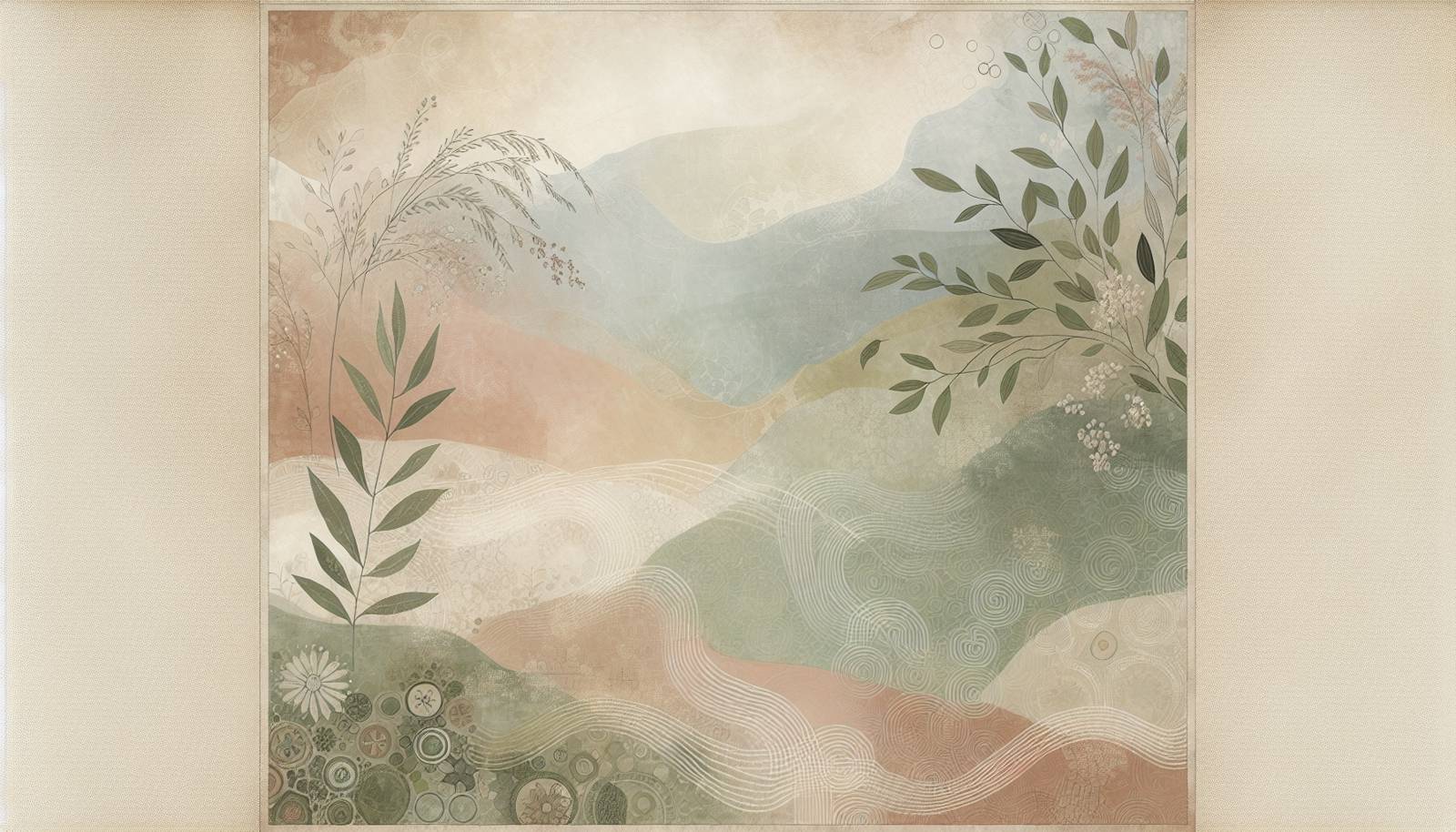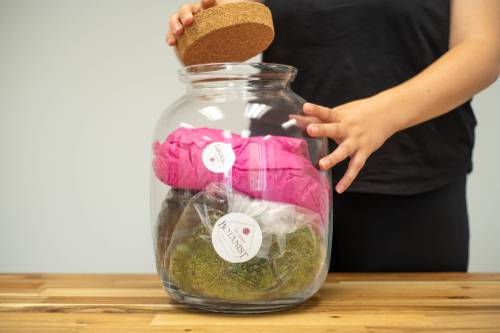
FAQ About DIY Indoor Plant Terrarium Kits

What is a DIY indoor plant terrarium kit?
A DIY indoor plant terrarium kit is a package that includes all the necessary components to create a self-contained miniature garden, usually within a glass container. These kits typically come with a glass jar or bowl, soil, plants, activated charcoal, pebbles, and decorative elements. The goal is to create a small, manageable ecosystem that can thrive indoors.

What plants are best suited for terrariums?
Terrariums are best suited for small, slow-growing plants that thrive in humid environments. Ferns, mosses, succulents, and air plants are popular choices. It's important to consider whether the terrarium is closed or open, as this will affect the plant selection due to humidity and temperature differences. For closed terrariums, moisture-loving plants like ferns and mosses are ideal. In contrast, succulents and cacti do better in open terrariums.

How do I care for plants in a terrarium?
Caring for a terrarium involves maintaining the right balance of water, light, and temperature. Ensure that the terrarium receives indirect sunlight to prevent excessive heat and light. Water sparingly, as the enclosed environment of a closed terrarium naturally recycles moisture. Mist plants if necessary, but avoid overwatering. Prune plants to maintain size and remove any dying leaves to prevent decay.

Can terrariums be self-sustaining?
Yes, terrariums can be designed to be self-sustaining, often referred to as self-contained ecosystems. In a well-sealed terrarium, plants undergo photosynthesis during the day, producing oxygen and moisture, which condenses and trickles down as water. This cycle can sustain the plants without external watering if balanced properly.

What are the benefits of creating a terrarium?
Creating a terrarium offers several benefits: it's a low-maintenance way to bring greenery indoors, improves air quality, and can reduce stress and enhance creativity through the design process. Additionally, terrariums make unique and attractive decor pieces, suitable for small spaces.

How do I prevent mold in my terrarium?
Preventing mold in a terrarium involves ensuring proper airflow, avoiding over-watering, and maintaining cleanliness. Open terrariums are less prone to mold due to better ventilation. Remove any dead or decaying plant matter promptly, and consider adding activated charcoal to the base layer to help filter impurities and control odors.

What kind of container should I use for a terrarium?
Terrariums can be created in a variety of glass containers, including fish bowls, bell jars, and mason jars. The container should be transparent to allow light in and should have enough space for air circulation and plant growth. Closed containers are ideal for humidity-loving plants, while open containers are better suited for desert plants like succulents.

Can I make a terrarium without a kit?
Yes, you can create a terrarium without a kit by gathering materials individually. You will need a suitable container, soil, plants, pebbles or rocks, activated charcoal, and decorative items. DIY projects allow for more customization in terms of plant and decor selection.

How do I choose the right plants for a terrarium?
Choosing the right plants depends on the type of terrarium (open or closed) and the lighting conditions available. For a closed terrarium, select moisture-loving plants like mosses, ferns, and tropical varieties. Open terrariums are suitable for succulents and air plants which require more airflow and less humidity.

What is the purpose of activated charcoal in a terrarium?
Activated charcoal is used in terrariums to filter the water and air within the container, helping to reduce odors and prevent mold growth. It acts as a cleansing layer between the soil and the base materials like pebbles, maintaining a healthy environment for the plants.

How often should I water my terrarium?
The watering frequency for a terrarium depends on the type of container and plants. Closed terrariums rarely need watering due to their self-sustaining cycle, whereas open terrariums might require watering every week or two. Always check the soil's moisture before watering to avoid over-saturation.

Do terrariums need sunlight?
Yes, terrariums need sunlight, but it should be indirect to prevent overheating and burning the plants. Bright, indirect light is ideal. If natural light is limited, fluorescent or LED grow lights can supplement the plants' light requirements.

Can you include animals in a terrarium?
While some people do include small animals such as snails or insects in terrariums, it's generally not recommended unless you have the expertise to care for them. The confined space can be challenging to maintain ecological balance and provide adequate care for live animals.

How do I prune plants in a terrarium?
Pruning in a terrarium involves carefully trimming overgrown plants to maintain their size and shape, using sharp, clean scissors or pruners. Always cut above a leaf junction to encourage healthy growth. Regular pruning prevents overcrowding and keeps the terrarium attractive and healthy.

Can I use artificial plants in a terrarium?
Yes, artificial plants can be used in terrariums for decorative purposes and to create a low-maintenance display. This option is suitable for those who prefer minimal upkeep and do not wish to manage live plants. However, the ecological and air-purifying benefits of real plants will not be present.

What should I do if plants in my terrarium start to die?
If plants start to die, first remove any dead material promptly to prevent disease spread. Assess the conditions in the terrarium: check for appropriate light, temperature, and moisture levels. Adjust watering routine, ensure soil drainage is effective, and consider replacing plants with more suitable varieties.

How can I decorate a terrarium?
Decorating a terrarium involves adding elements like rocks, shells, small figurines, and colored sand. These can complement the plants and enhance the visual aesthetic. Be mindful to use materials that won’t affect the pH or moisture levels within the terrarium.

What is the difference between an open and closed terrarium?
An open terrarium does not have a lid and is suitable for succulents and plants that require less humidity and more airflow. A closed terrarium is a sealed environment, perfect for moisture-loving plants like ferns and mosses, and naturally recycles air and water within.

How long do terrariums typically last?
The lifespan of a terrarium largely depends on the plants chosen and how well it's maintained. With proper care, terrariums can last for several years, although individual plants may need to be replaced as they outgrow the space or succumb to the indoor conditions.

Are there any common mistakes to avoid when building a terrarium?
Common mistakes include overwatering, choosing unsuitable plants, and not providing adequate light. It's also important to layer materials correctly—drainage materials like pebbles should be at the bottom, followed by activated charcoal, and then soil. Finally, ensuring not to overcrowd plants will help maintain a healthy environment.
